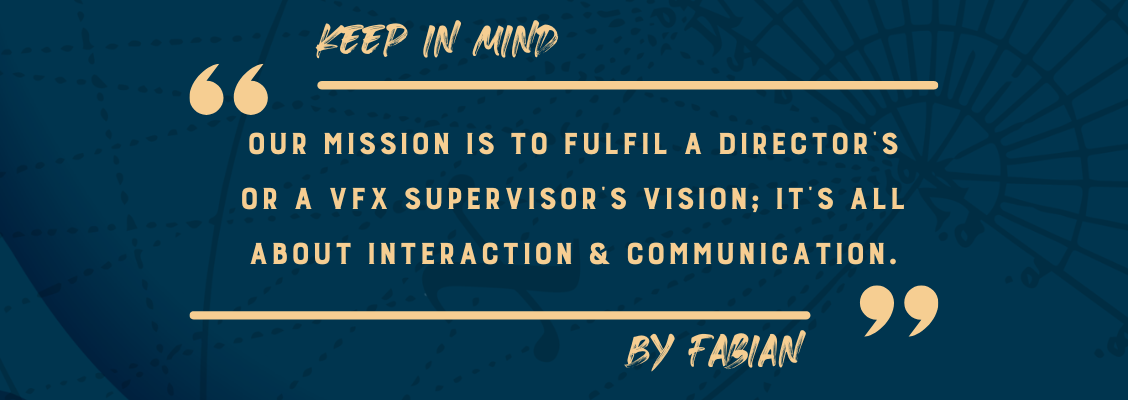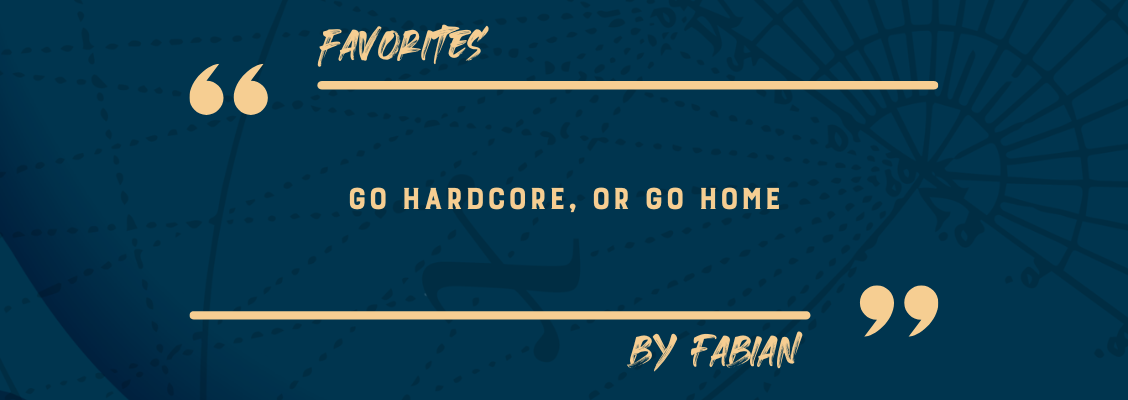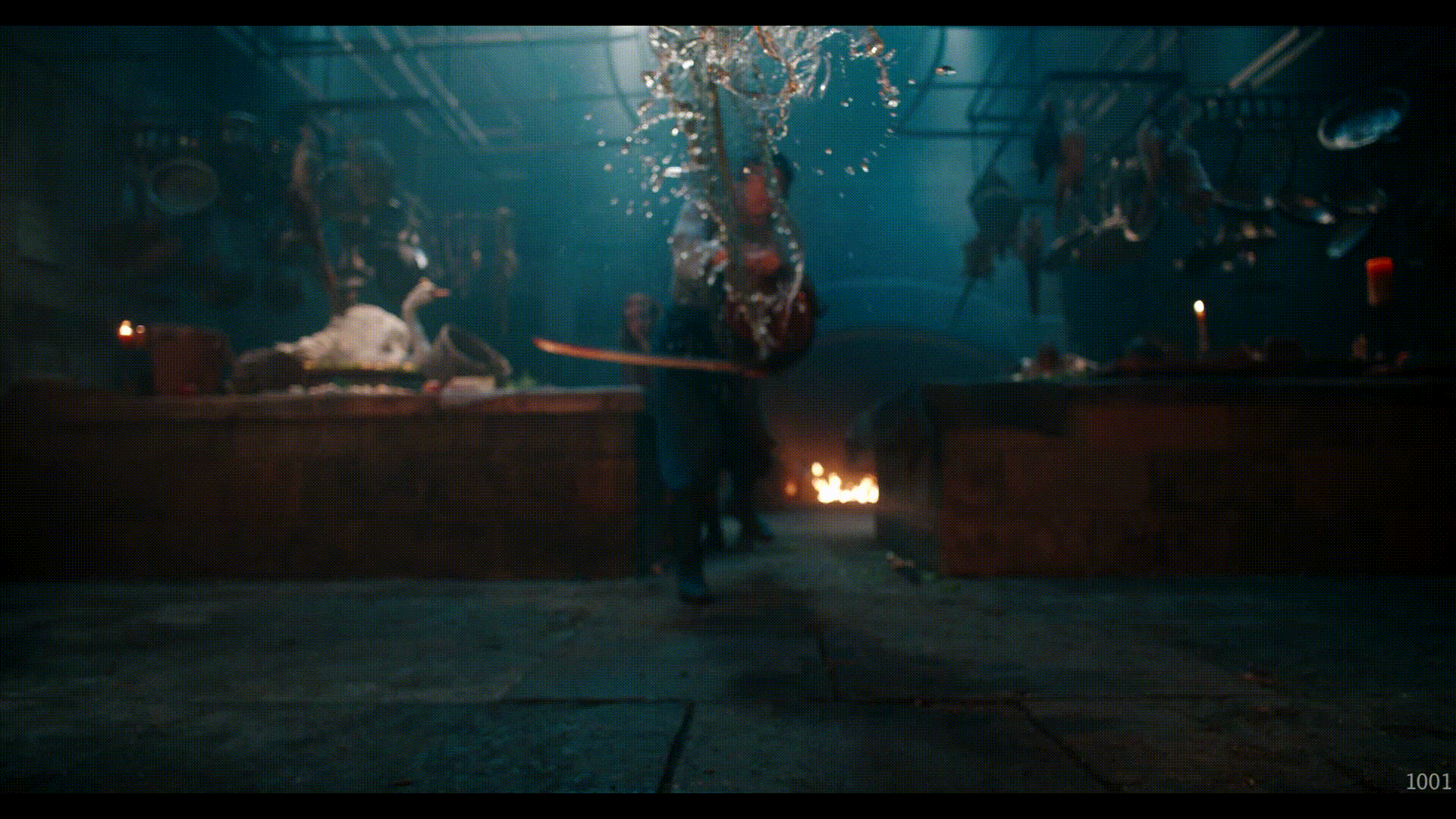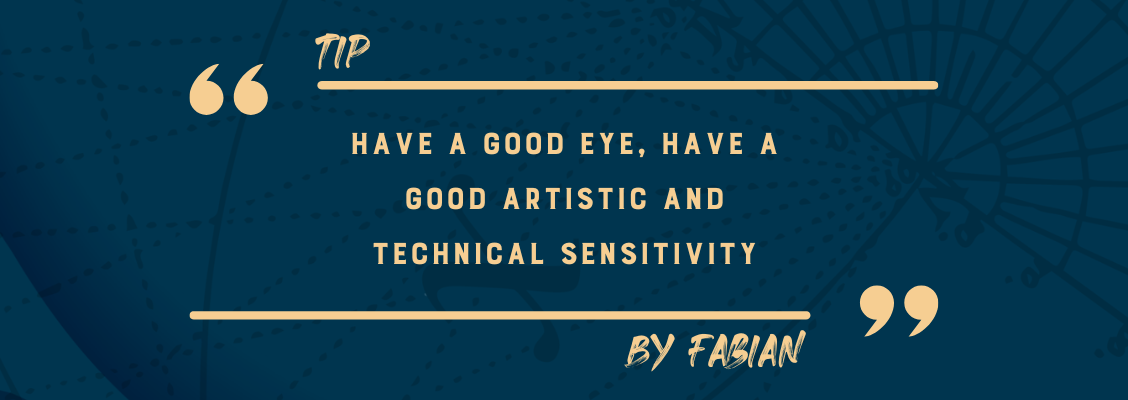
Meet The Yardeners – the passionate team at The Yard, who strives everyday to make the seeds of creativity grow into stricking visual effects, fruitful collaborations and stories to remember.
This week, we introduce you to Fabian Nowak. With 15-year experience in FX at most renowned international studios and after a VES award for Outstanding Effects Simulations in a Photoreal Feature on The Jungle Book (also Academy Award winner for Best Visual Effects), Fabian has joined The Yard two years ago as Head of FX and FX Supervisor.
Hello Fabian ! Could you please explain your current role at The Yard ?
Hi there ! I’m the head of the FX department and I’m also the FX Supervisor at The Yard.
It’s a pretty large role, as I’m planning, overseeing and supervising the creation of the tools and the pipeline for FX and ensuring its integration into the overall Studio’s pipeline. I need to think about our technical needs, and how to provide them so the department can work in good conditions and deliver what is expected from us. As we create new tools, I’m also in charge of training the team to use them.
I am also managing the staff, building teams that work well together to carry on tasks, I follow up my artists to bring them to higher levels of competence, and for the most senior of them, I’m helping them improve their work and workflow in any way I can.
I’m helping the Production team to bid the incoming shows in regard to the FX, defining the different types of effect, their level of difficulty, etc. turning them into production tasks, and together we are making the schedules to distribute those tasks to each artist of the team.
As well as an FX Supervisor, I’m reviewing everything that is done by the artists from the FX department, giving notes or technical advice on every shot from every show, to ensure that the team’s work matches the quality standard I’ve set, in order to be shown directly to supervisors and directors.
I’m always addressing some specific needs and I’m building new setups to be used by the artists on different shows.
And of course, I’m always available to any of the artists from my departement when they need any help to sort out some technical or artistic issue they might encounter along the way.

What do you find great about your department ?
FX is an essential department within the VFX world.
We’re dealing with everything that is dynamic simulations : fire, smoke, particles, explosions, soft bodies (clothes), rigid bodies (destruction), liquids, and so on.
We are working everyday with pretty much all the other departments at the studio, upstream and downstream to the FX, it’s a strong collaboration that goes back and forth. Which means that we must understand how each of these departments are working, what constraints they have, what their needs are, etc.
Also, we have to fulfil the vision of the director, or the VFX Supervisor, and this involves a lot of interaction and communication.
Before starting any project, I always have a thorough discussion with the VFX supervisor, so that I can translate the artistic wishes into the right vocabulary for the FX team.
Every day is different, every day there’s a new challenge. We’re constantly looking for new solutions in order to respond to new problems or challenges, and we’re making sure that these solutions are sustainable, so that we can capitalize on them.
What brought you to FX ?
As a kid, I grew up watching Indiana Jones, Star Wars, Alien, Conan the Barbarian, Jurassic Park, Back to the Future, etc. those films sort of shaped my mind and my vision of the cinema. And I was already dreaming of working in cinema, to bring incredible worlds on the big screen. I was using my father’s camera and my toys to recreate bits of films that I loved. I also used to draw a lot. I loved drawing comic strips, and I was dreaming to see my drawings come to life.
Fabian’s film references :
But all of this was just a hobby to me and I chose to study architecture – a « proper » job that would involve drawings somehow.
At some point, I realized I was engaged in very long studies with a few pros and a lot of cons, and maybe not so much fun in the end, to say the least. I wasn’t very happy at that point. At the same time, some of my best friends were studying cinema and 3D animation at Georges Melies school. That school was looking like something straight out of a dream ! Eventually I did realize that this was where I should be. My kid’s dreams could become an actual real job for me. So, I’ve quit architecture, and I’ve joined George Melies School.
When I graduated, I really wanted to specialize in compositing, so I started looking for a job in that field but there was no place for me at any of the VFX studios in Paris.
After a few months, a good friend of mine told me to apply for a FX job at Ubisoft, which was not at all what I was heading for. I’ve passed a sort of entrance test, which had quite a lot of technical constraints, but was pretty fun, and eventually I got hired… for an absolutely insane experience, which lasted for 3 and a half years. I’ve learned so much and met incredible people who trusted me, and gave me the chance to go beyond what I thought I could do, allowing me to develop a bunch of new skills, and become a much better person than I was.
This was definitely a game-changing experience to me.
Since you’ve joined The Yard, you’ve worked and supervised a lot of projects. Could you please give an overview of the array of works made for them ?
So far, the FX team has been involved on every project carried by The Yard.
We have worked a lot on fire for The Princess, Notre Dame (La Part du Feu), Greek Salad, Murder Mystery 2, Les Amateurs, etc.
Shots involving Fabian‘s work for The Yard or The Yard’s FX Department : The Princess, Notre Dame La Part du Feu, Greek Salad, Murder Mystery 2, Les Amateurs. See below :
Fire was particularly challenging on Notre Dame on Fire by Jean-Jacques Annaud, for which we went through a long internal battle to deliver a bunch of heavy CG shots. The film required plenty of simulations of fire, smoke, sparks, heat effects in all directions. And this was done on a fairly large scale with rather wide shots, integrating CG fire into plates with practical fire, which meant making a seamless blend between the real fire and the CG fire.
We have grown to a larger department, and we are able to deliver pretty much any type of FX:
- For John Wick 4 we did some blood, molten metal, and the massive explosion of a famous building right in the middle of Manhattan.
- We did a bunch of muzzle flashes, bullet impacts and massive mortar explosions on WWI film Tirailleurs.
- We did a bunch of fire, smoke, particles, blood, debris, clothes, etc. on All The Light We Cannot See.
- We did some smoke, dirt, rigid bodies, heavy water simulations for Indiana Jones 5.
And right now we are doing some even bigger effects on the current shows we’re working on…!

What is your favorite effect to work on ?
Water and Fire : Splashes and Woosh !

To make good FX, you need a keen eye for analyzing real-life references, being able to understand which forces are in play, and reproducing them in 3D and integrating them into a director's vision. You also need a good sense of timing.
What major evolution do you see upcoming in your field of expertise ?
GPU acceleration will bring simulation times closer and closer to real time. I guess in a near future, we won’t have to wait for simulation anymore !

Any piece of advice you’d give to students to choose FX for their career ?
FX is a department where both technical and artistic skills are strongly required. It’s important to have a good eye, and to have a good artistic and technical sensitivity :
- Have a solid understanding of the basic laws of physic (gravity, friction, buoyancy, acceleration, speed, mass, etc.) ;
- Have a sharp eye to be able to recognize these laws in action when watching real life references ;
- Use all dynamic tools at your disposal, use and abuse them in any ways in order to do what you need to do : it’s not the tool that’s important, it’s how you’re using it ;
- Be capable of reproducing complex real life behavior within a given artistic direction – that’s a key point, since FX are here to support a story and a vision.
Personally, I’ve always been more of an artist than a pure technician, and there came a day when I realized that if I didn’t get out of my comfort zone, I wouldn’t succeed in overcoming certain barriers that were limiting me. I forced myself to learn technical parts that were putting me off until then, and that opened doors for me, and I made great progress.
It’s essential to be curious – you need to be ready to learn everyday. If you don’t practice and learn, you’ll rust. And if you’re rusted, you become useless.
One last important point : have fun doing what you do, or change discipline !










